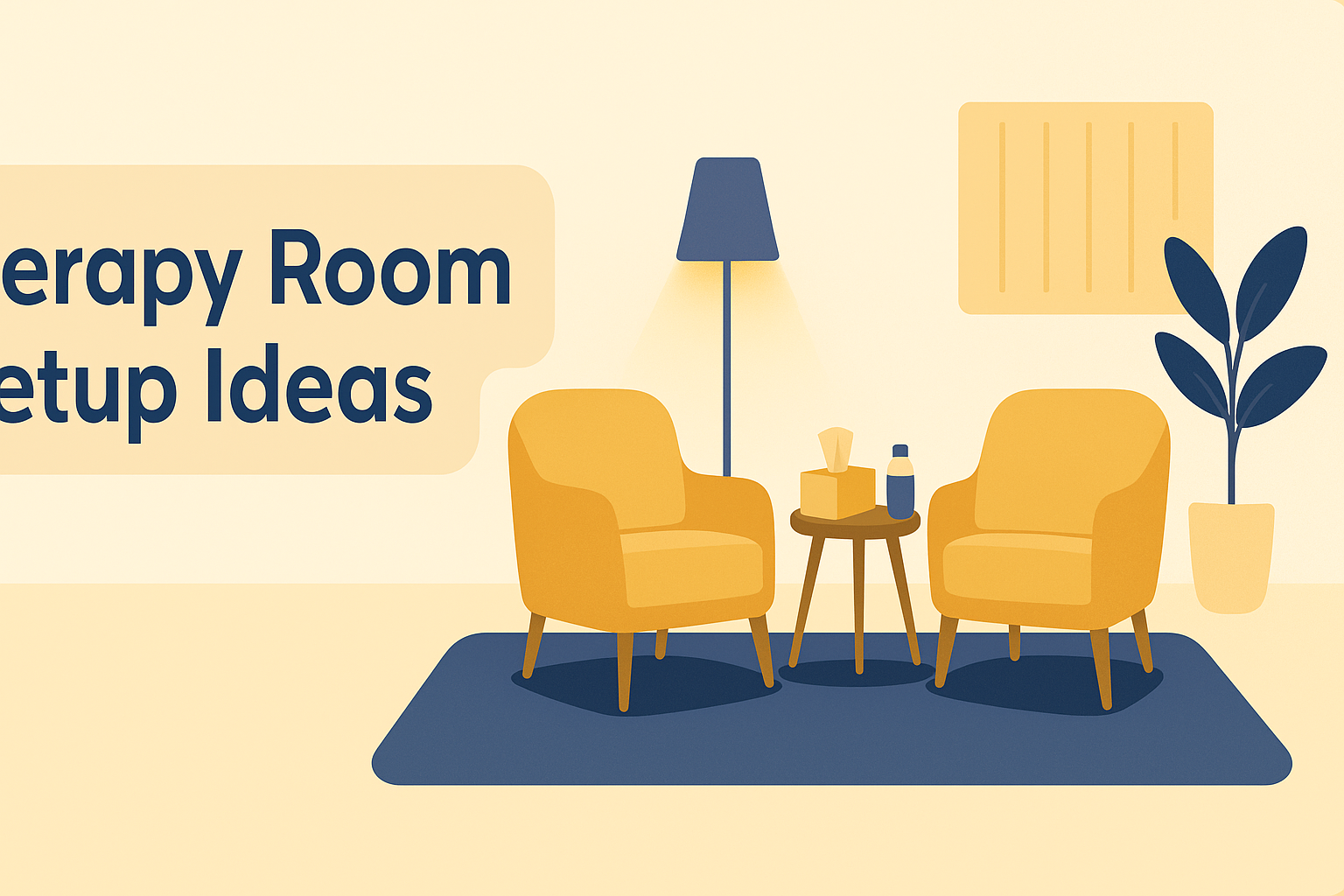
Designing the Therapeutic Space: Using Layout, Color, and Other Elements to Get Patients in the Right Frame of Mind
We aren’t always aware of it, but our physical environment is constantly influencing our emotions and general well-being.
We aren’t always aware of it, but our physical environment is constantly influencing our emotions and general well-being. In the same way, the design of clinics and counseling rooms may affect the therapeutic experience of mental health clients, as well as the experience of therapists themselves.
“Room layout affects service user perceptions of psychological safety, intimacy, willingness to self-disclose, to build therapeutic rapport, and to feel a sense of agency in the space. Poor layouts in the therapeutic area can exacerbate feelings of otherness, mitigate development of agency, reduce communication, and have poor service user outcomes and experience,” said Dr Stephanie Liddicoat-Ocampo, a researcher and architectural design academic at the University of Melbourne, Australia.
More specifically, the layout of a counseling space can influence mood, cognition, and behavior. According to Dr Liddicoat-Ocampo, ill-considered layouts may be suggestive of being “other” or being different, which she believes can have “negative effects on service user cognition and exacerbate feelings of alienation and stigma.”
The effect of a counseling room’s design may differ for the client and the therapist. “Both users of the space will have different perceptions of, and needs from, the space; we must consider both users of the space, their psychological states during their occupation of the space, and what cues they will take from the design of the space to inform their own behaviors, cognition, and psychological comfort,” said Dr Liddicoat-Ocampo.
Therapeutic Space by Design
While there is no single way to design a conducive therapeutic room, mental health professionals can help ensure that clients have a comfortable therapeutic experience by keeping the area a welcoming, cozy, warm, and safe environment for emotionally vulnerable individuals. Some factors to consider when creating or redesigning a counselling room include the following 1-3:
Colour. Many therapists may not be able to control the type of paint or wallpaper that goes on the walls, but if they are able to choose colours, it is generally advisable to use light and soothing ones, such as shades of green or blue.2
Seating. Dr Liddicoat-Ocampo noted, “It is important to ensure that the seating area for therapist and service user is nonconfrontational and conducive to dialogue and supporting service user empowerment and agency in the space.” It is also essential that chairs have ample back support, be adjustable or easily moved around, and be heavy enough not to be picked up in cases when a client may have a history of violence. It may also be beneficial to place the client’s chair in a spot where they can see the door to add to their sense of free will and safety.
Nature. Research suggests that the presence of even small components of nature may be associated with better mental health.4 Keeping a few plants in the office, having views of serene landscapes, or having access to a courtyard or nearby garden can add to a positive therapeutic experience.
Materials. Research shows that for reasons that are not entirely clear, people prefer natural-colored wood with a grain rather than surfaces without a grain. They also feel more comfortable with wood than with sleeker options such as chrome or glass. However, when natural wood surfaces such as floors and walls take up more than 45% of the surface of a room, it starts to lose its stress-relieving effects.2 People also do not want surfaces to leave traces of people in the room before them, such as fingerprints.3
Windows. Whenever possible, keep windows open to let sunlight in. This helps ensure the space looks and feels bright, open, and warm.
Adjustable Lighting. One way to empower clients is to give them the option to make light fixtures or lamps inside the clinic as dim or as bright as they please. Adjust the light to a level that is most comfortable for the client. This also demonstrates the importance of their needs and strengthens their ability to express those needs.
Privacy. Ensure that conversations are not audible outside the room. Entrances and exits must also be as private as possible to make clients feel protected.
Age-Appropriate Furniture. If families, children, or the elderly are among the clients, it is essential to provide chairs or couches that are comfortable for all. If desks are used during sessions, round tables may facilitate more interactive communication.
Soft Furnishings. Using soft furnishings and flooring materials (like rugs or carpets) provides a soothing feel to a room and creates a sense of comfort.
Positive Distractions. Some good “distractions” can help a client by allowing him or her to rest from discussing some emotionally uncomfortable topics. They can shift their focus to a piece of serene artwork, a soothing tabletop fountain, a calm spot away from the therapy space, or even comforting toys. Talking about weighty matters can bring about feelings of vulnerability, and it may be beneficial for clients to take a break every now and then.
Personalization. A few personal elements, such as small mementos or the therapist’s credentials, can be reassuring to the client. However, it is best to keep personalization to a minimum, to help the client feel “at home” within the space, and not like a visitor.
Layouts to Avoid
Some things to avoid when designing the therapeutic space include the following2,3:
Closed-in Spaces. Refrain from using “prison-like” spaces with hard surfaces and no windows. Rooms like these can imply punishment or make clients feel they are unable to escape.
Clutter. Keeping the therapeutic space tidy and neat helps maintain a sense of calm and orderliness.
Potential Triggers. Artwork that inadvertently depicts sadness, violence, or death may contribute to feelings of vulnerability or trigger other mental health issues the client is experiencing.
Fixed Seating. Allow the client to adjust the seating arrangement to give him or her a sense of agency. Clients may also be uncomfortable if the therapist’s chair seems to be made from better materials or is built to be higher than their own chair. This can make the client feel inferior and the therapist seem unapproachable.
Neglected Waiting Rooms. Dr Liddicoat-Ocampo noted that waiting room layouts are also significant. Poorly designed ones may increase client anxiety and can give the worrying impression that the individual will not get inadequate level of care. Administrative areas like reception and record keeping must also be incorporated in a way that does not affect the client’s waiting period negatively.
It is not necessary to redo your current counselling space completely or replace all furnishings with new ones. However, it may be worth making small adjustments to help keep the therapeutic experience positive for both client and the counsellor. “The built environment represents a modifiable feature which we can [use] to support the delivery of mental health services if we engage design practice in intelligent and sensitive ways,” Dr Liddicoat-Ocampo said.
References
- Pearson M, Wilson H. Soothing spaces and healing places: Is there an ideal counselling room design? Psychotherapy in Australia. 2012;18(3):46-53.
- DeAngelis T. Healing by design. Monitor on Psychology. http://www.apa.org/monitor/2017/03/healing-design.aspx. Updated March 2017. Accessed September 22, 2018.
- Reilly G. Designing the right headspace: counselling and therapy spaces are often inappropriate for people with mental illness. Pursuit. https://pursuit.unimelb.edu.au/articles/designing-the-right-headspace. Updated July 20, 2017. Accessed September 22, 2018.
- Cox DTC, Shanahan DF, Hudson HL, et al. Doses of neighborhood nature: the benefits for mental health of living with nature. BioScience. 2017;67(2):147-155.






Support Therapy Rooms